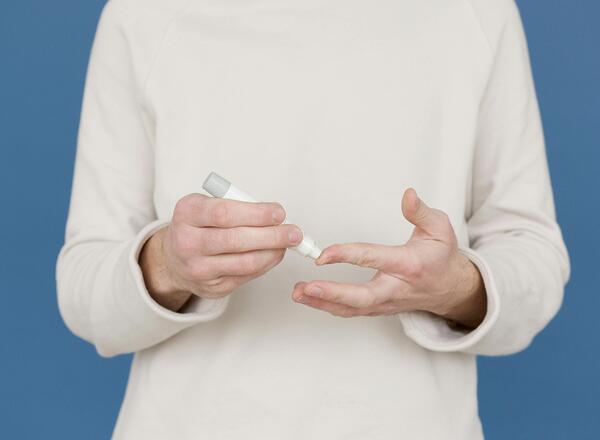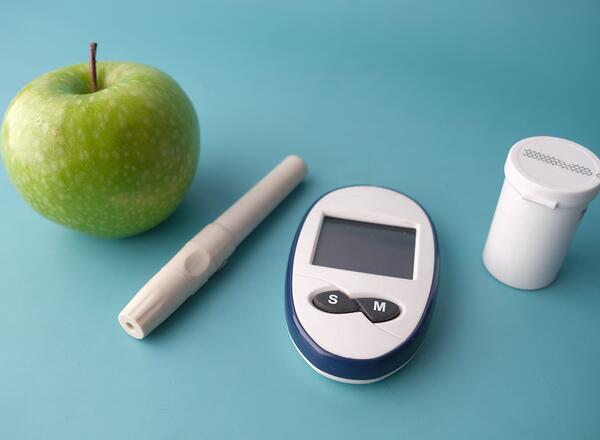- ICR: 1:10 (1 unit of rapid acting insulin for every 10 grams of carbohydrates)
- ISF: 1:40 (1 unit of rapid acting insulin will decrease blood glucose by 40 mg/dl)
- Pre-meal target blood glucose range: less than 70-100 mg/dl
- Pre-lunch blood glucose level: 220 mg/dl
Lunch:
- 1 small apple (15 grams carb)
- Turkey sandwich on whole-wheat bread with lettuce and tomato (30 grams carb)
- 6 ounces yogurt (15 grams carb)
Example: You eat 60 grams of carbohydrate for lunch and your pre-determined insulin-to-carb ratio is 1:10
To determine your lunchtime insulin dose need to cover 60 grams of carb, divide 60 by 1
60 grams of carbohydrate / 10(ICR) = 6
(6 units of insulin to cover 60 grams of carbohydrate)
Use your insulin sensitivity factor (ISF) to reach target blood glucose
Current pre-lunch glucose 220 mg/dl – Target glucose 100 mg/dl / ISF 40
120/40 = 3 units of additional insulin for ISF
3 units of insulin will bring your pre-lunch blood glucose of 220 mg/dl to target blood glucose of 100 mg/dl
Next, add in insulin dose to cover lunchtime carbs:
6 units of insulin to cover 60 grams of mealtime carbohydrates (1 unit insulin per 10 grams of carb)
+ 3 units of insulin (insulin sensitivity factor or correction dose) =
9 units total lunch time insulin dose is the amount estimated to cover lunch-time carbs plus 3 extra units of insulin to cover elevated mealtime glucose
The above calculations are offered only as an example. Ask for a referral to a registered dietitian or a certified diabetes educator for assistance with advanced carbohydrate counting. It takes time, careful food intake and blood glucose record keeping to determine your insulin sensitivity factor and insulin to carb ratio. These will likely change over time and may require a little trial and error to find what works best for you.


